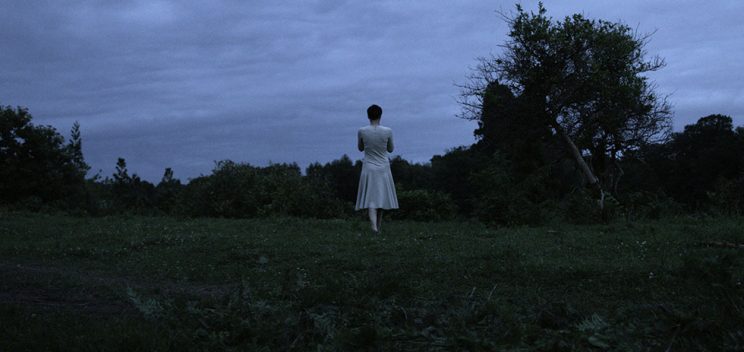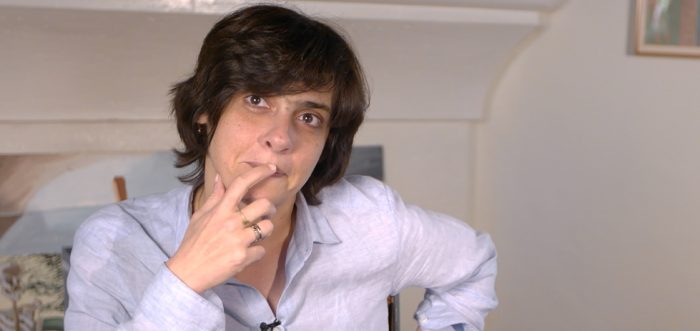It would be disingenuous to call House of Others a film about war, even as its presence underpins Rusudan Glurijidze’s debut feature film. While it has a central place in the work, Glurijidze is more concerned with the aftermath of conflict, the smouldering wake of the 1990s Georgian civil war in Abkhazia the setting. When the work played as part of Locarno’s Open Doors program, the description read: “Military hostilities are already in the past. Nobody is being killed. Calm has settled.” It’s a statement that holds true throughout the work, where the war plays out in the reverberations of conflict: the audience is positioned to contemplate the implicit – in what it means to live in a vacant house of a family from the other side of the war. The starkest observations come as the characters at the heart of the film “struggle to inhabit the abandoned houses and leftover lives of the conquered.”
Glurijidze remarked at the time of the film’s release: “I remember how a continuous flood of refugees headed for the frozen capital, wrapped in darkness. As they ran away they were sure that they would come back soon, but twenty years have passed and still they wait to return to their homes.” It’s a powerful image, and it serves as a strong indicator of just how Glurijidze processes a painful history; proceeding to weave it into the series of slow, lasting, and poignant images that make up her impressive debut. We caught up with Rusudan Glurijidze at Sydney Film Festival to talk about filming conflict, bringing the work together, and the reception it has received back home.
The topic of war underpins the film, but you’re focusing on the aftermath. What led you to approach the conflict from this angle?
Because the war, in particular this war, it’s our generation’s war. In general… we are like a generation of wars. It happened after collapse of the Soviet Union – in this very beautiful region of Georgia, Abkhazia. After that, this region was separated from Georgia so we have a lot of connections with this land. It’s our past, it’s our relatives; and our friends and families. So it was very painful, and this war is still, maybe, the most painful topic for Georgia today. In my point of view, as a cinematographer you should express the most important emotions. That’s why, I don’t know how… this topic came to me. It was not what I would like to have done: to make film about war.
It’s fascinating how the film has that framing around war, but ends up being more focused on how the conflict manifests after the physical side of it all has ended: where the work becomes focused more on memory and time – shot with this pointedly slow style.
It’s not a film about war, it’s a film about people and people’s decisions and people’s relations after the war. Maybe it’s that much more important relationships and decisions [happen] after the war because after wartime is more difficult than wartime. I don’t know about slow pace, it’s always been my storytelling style. In general I’m trying to express my story and to tell my story through visual images, because for me, cinema is first of all visual art.
This is a very visually-oriented film. What was the process in writing and bringing it together, considering such a large degree of it would have been tied to thinking about how you wanted to frame certain images, rather than simply a script alone?
I can tell you that me and my scriptwriter [Dato Chubinishvili], we tried our best to describe in great detail each frame, and each sequence, because my script was not some literature issue. It was a very precise and detailed description of frame, each frame and its sequence. Less dialogue and more description. Then I started with my friend, who is hero of the film, and worked on it with him. It was six months or seven months together, and we found this location.
Was this during pre-production?
No, not pre-production. Preparation of visual conception, I can tell you. We spoke about every small detail and we had the same vision of story. He helped me a lot to make this film with this visual conception and then of course the designer, and I think script, hero, set designer altogether made something special.

The dialogue is quite sparse, and there are pronounced moments of silence throughout the film. Was there a process for working with actors in that kind of silence, in giving them space onscreen and seeing how it played out?
Maybe it’s more difficult for actors because dialogue is a little bit easier and when you show just your inner condition without any words, maybe it’s more difficult.
How long have you been travelling with the film for?
Last July was the first screening of the film, in Karlovy Vary Film Festival, where it got the Grand Prix – then it was a lot of festivals. Sometimes five festivals, around the same time… I’d be flying all over the world.
How do you feel it’s been received so far, as a film? Do you think it’s been as you wanted it to be seen?
Yes, I’m very happy. It’s not an easy film and it’s not Harry Potter. I know it from when I started to work on it but I think it’s very nice that some people love House of Others. Some people hate it, but there are no middle emotions, so I am glad.
Has it played or screened much in Georgia at all?
It had a one day screening during Tbilsi International Film Festival, and then it played for one week in a couple of film theatres and small venues because we are now preparing for our big release in September.
Do you feel like there’s a difference in the audience when you’re showing it to an audience here and when you’re showing it to a country that it’s very much tied to?
Each country is different, but in general the topic is very common for all people. Maybe it’s a little bit far from Australia or from United States, I mean the topic about war, because there is no same experience, but anyway it’s about some common emotions and some common values. For me, most difficult was showing the film in Georgia for the first time, because this film is about Georgians and for Georgians first of all. For me it was most important their point of view… it was very important when one old woman refugee, she came to me and she told me that she left from her house twenty five years ago. After watching House of Others, she felt that she left only last week so it was very emotional for her.
That’s incredible, how a film is able to condense that time.
It’s about just few days, too… two or three weeks. It’s not about years but it’s about the nineties. It’s a story about twenty five years ago.

Memory is framed in a particularly unique way, with the distance between the present day and the events on screen. This war is in the past, and these conflicts were so long ago, yet your film makes them feel very immediate. Was this something you intended while working on the film?
You know, feature film is not documentary. First of all, it should be something realistic inside but it should be another point of view or another perspective, and I think memory is the most important thing we have. All of us, we spoke about or own experience, so it’s about our memories and our pasts. Maybe there is some other way of storytelling but for me it’s first of all you should express yourself.
I’d be interested that now that you’re probably almost a year into travelling with your film, I guess where you wanna go with your film making after this.
I think, for me, Australia will be one of the last places I will visit with House of Others, because I travelled a lot and it’s very difficult and it’s very boring. I mean not to visit, it’s very interesting to visit each country and to discover some new places, meet new people and to show it for audiences, but same time you always need to work, and it’s impossible to work when you are travelling. Now I would like to concentrate on the next movie, and make a script because for me it’s very important to deliver the story. House of Others is already done, now I should think about next one.
